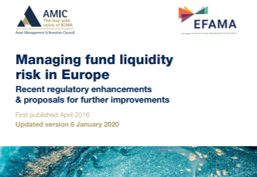UCITS
UCITS (Undertakings for Collective Investment in Transferable Securities) refers to the EU framework for harmonising the creation, management and marketing of collective investment schemes in the EU (and EEA) Member States. It places a strong focus on investors’ protection and product regulation. Owing to this harmonised framework, once UCITS funds are registered in one Member State, they can be freely marketed across the European Union. Initially adopted in 1985, the UCITS Directive has since been modified repeatedly, to take into account developments in financial markets.
EFAMA is adamant to protect the competitiveness and international appeal of UCITS.
Coalition letter on keeping European markets open
EFAMA's Response to ESMA's consultation on Guidelines on Performance Fees in UCITS
Policy Recommendations for the Next European Commission
ESMA's call for Evidence on the Eligible Assets Directive
ESMA’s Call for Evidence on the UCITS Eligible Assets Directive is a welcome opportunity to take stock of the existing UCITS framework.
New rules for the AIFMD and UCITS Directive
New rules for the AIFMD and UCITS Directive were published on 26 March 2024 in the Official Journal of the European Union, making them law. These investment frameworks are European success stories and an integral part of the Capital Markets Union (CMU).
Size, age, investment strategy and geography are key determinants of UCITS cost
EFAMA’s latest research shows the average product cost of active and passive equity UCITS available to retail investors fell to 1.04% and 0.27% respectively in 2022.
AMIC EFAMA Report - Managing fund liquidity risk in Europe - 2020
In 2019, AMIC and EFAMA decided to update their 2016 report “Managing Fund Liquidity Risk in Europe” following important policy and regulatory developments at EU and international levels. The purpose of this updated report is to outline the practical liquidity risk management processes which fund management companies put in place when setting up a fund and implement throughout the life of the fund. Also, the report describes the existing European and international regulatory frameworks in the area of fund liquidity risk management.































